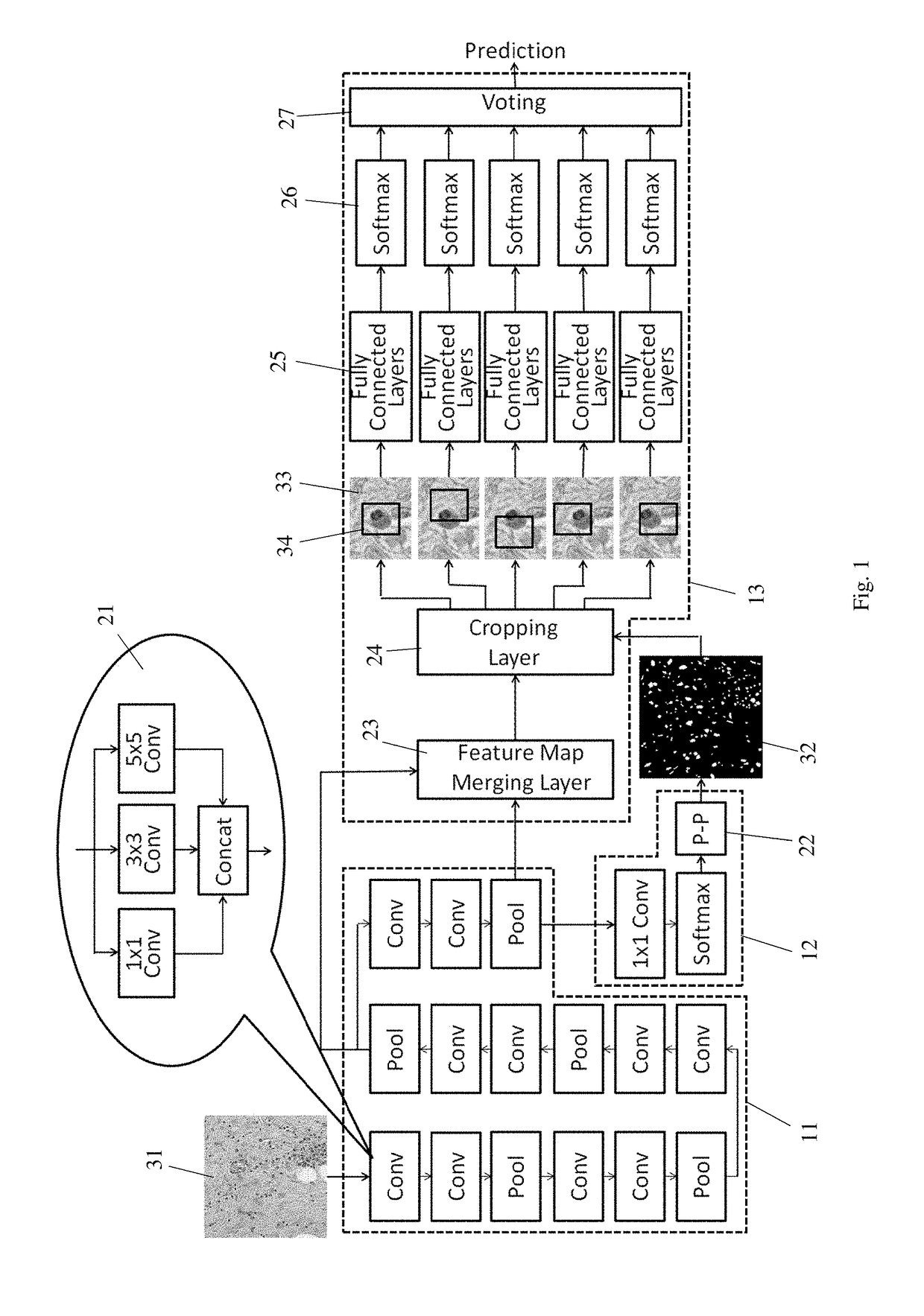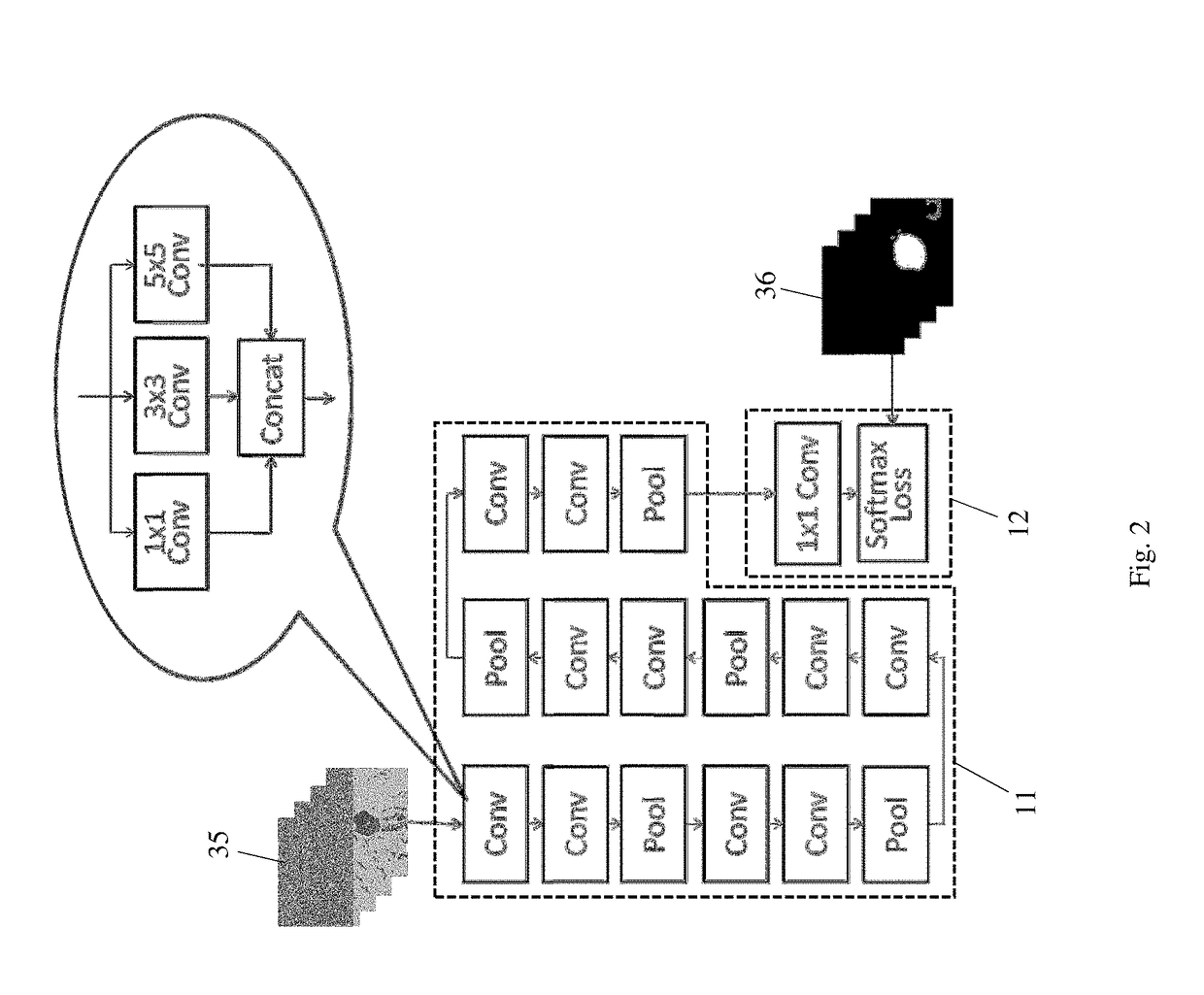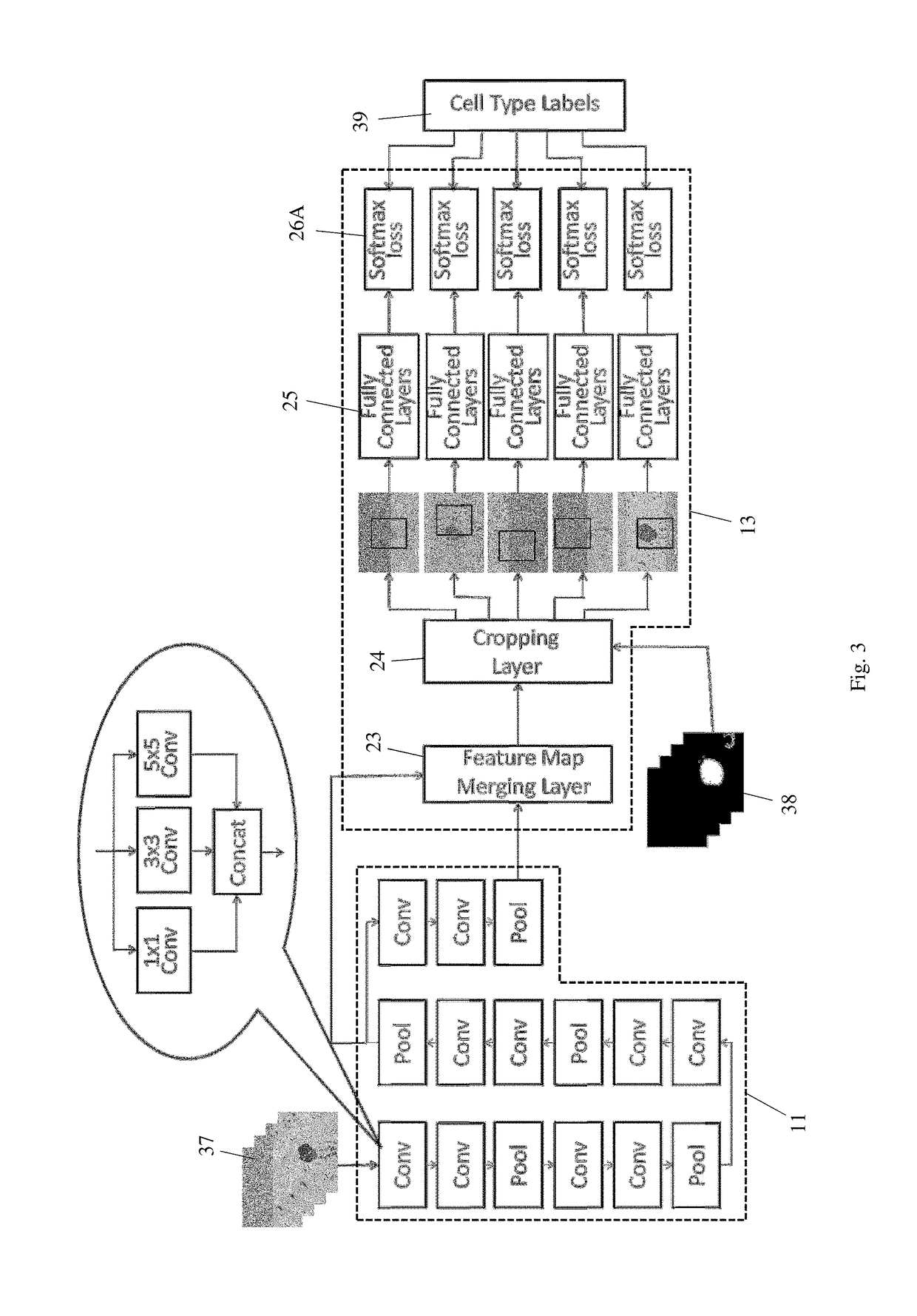Method and system for detection and classification of cells using convolutional neural networks
- Summary
- Abstract
- Description
- Claims
- Application Information
AI Technical Summary
Benefits of technology
Problems solved by technology
Method used
Image
Examples
Embodiment Construction
[0022]FIG. 1 schematically illustrates the architecture of an artificial neural network system for both cell segmentation and cell classification of biological images. The network system is a unified network with two branches for cell segmentation and classification, so that segmentation and classification share weights in feature extraction.
[0023]The system includes a feature extraction network 11, which is common to the segmentation and classification structures; it further includes a first branch network 12 which performs cell segmentation, and a second branch network 13 which performs cell classification. Both the first branch network 12 and the second branch network 13 take data from the feature extraction network 11 as input; the second branch network 13 also takes the output of the first branch network 12—the segmented image, also referred to as the segmentation map—as input.
[0024]The feature extraction network 11 is a deep convolutional neural network. In one embodiment, the...
PUM
 Login to View More
Login to View More Abstract
Description
Claims
Application Information
 Login to View More
Login to View More - R&D
- Intellectual Property
- Life Sciences
- Materials
- Tech Scout
- Unparalleled Data Quality
- Higher Quality Content
- 60% Fewer Hallucinations
Browse by: Latest US Patents, China's latest patents, Technical Efficacy Thesaurus, Application Domain, Technology Topic, Popular Technical Reports.
© 2025 PatSnap. All rights reserved.Legal|Privacy policy|Modern Slavery Act Transparency Statement|Sitemap|About US| Contact US: help@patsnap.com



